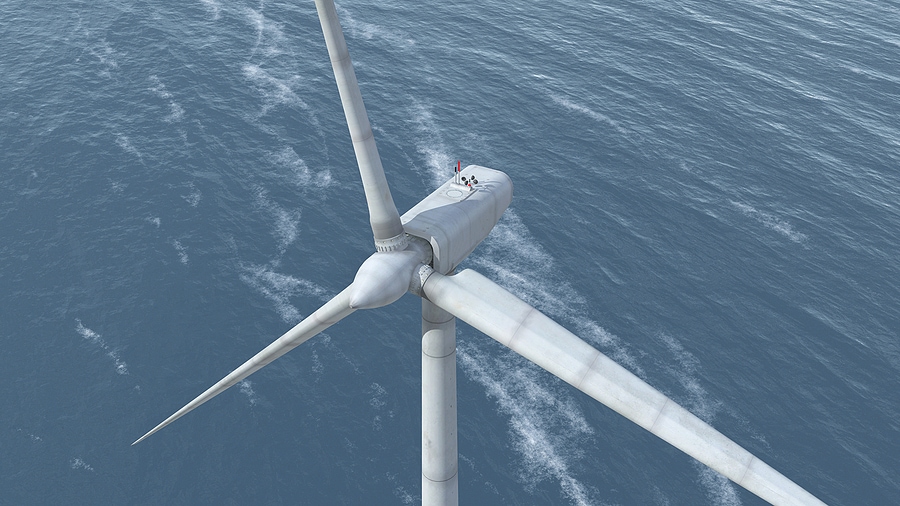Three Questions with Chris Kearns, Acting Commissioner of the Rhode Island Office of Energy Resources

MIRO3D / Bigstock.com
 In October 2023, Massachusetts, Connecticut, and Rhode Island signed a memorandum of understanding (MOU) to create a pathway toward the nation’s first multi-state offshore wind power procurement solicitation. The MOU allows developers to submit bids to the three states at once, which could potentially reduce costs for ratepayers, diversify the region’s energy portfolio and expand the economic benefits offshore wind in the wider New England Region.
In October 2023, Massachusetts, Connecticut, and Rhode Island signed a memorandum of understanding (MOU) to create a pathway toward the nation’s first multi-state offshore wind power procurement solicitation. The MOU allows developers to submit bids to the three states at once, which could potentially reduce costs for ratepayers, diversify the region’s energy portfolio and expand the economic benefits offshore wind in the wider New England Region.
CESA’s Sam Schacht spoke with Chris Kearns, Acting Commissioner of the Rhode Island Office of Energy Resources, about why the three states decided to pursue a coordinated approach and how it will shape the future of offshore wind procurement.
Sam: What has Rhode Island’s procurement strategy been so far, and what led you to pursue multi-state collaboration?
Acting Commissioner, RIOER: This pursuit would be Rhode Island’s third offshore wind project, after Block Island and Revolution Wind. Our hope is that this project will be done in a partnership with Massachusetts and Connecticut. For Revolution Wind, we were actually a footnote in the Massachusetts offshore wind procurement back in 2017 and early 2018, and, ultimately, we selected a project through that Massachusetts procurement. Revolution is a 704-megawatt project in totality with 400 megawatts tied to Rhode Island and 304 megawatts tied to Connecticut. That project will interconnect into Quonset Point in North Kingstown, RI.
We are experiencing a challenging environment in terms of energy project development, including the higher interest rates and inflation, which impacts the financing for offshore wind projects. Rhode Island is looking at 1200 MW of new offshore wind capacity, Connecticut is looking at 1196MW, and Massachusetts is looking at 3600 MW. While we’ve gone at it alone in past energy procurements, we’ve never tried coordinated offshore wind RFPs where we tell offshore wind developers, “Hey, if you have a federal lease area that can accommodate 2000 or 3000 plus MW of capacity, we would want to see the energy pricing for a 1200 MW power purchase agreement that is a part of a 3000 or 4000 MW collective project.”
If we leverage our three procurements together, we may achieve economies of scale that drive down the energy cost for the states.
Sam: What has it been like to work with Massachusetts and Connecticut, and what is the decision-making process once you receive bids?
Acting Commissioner, RIOER: It was wonderful working with the two states—great collaboration and great back and forth. These things take time. The process played out over several months, and we were very pleased with the collaboration and the announcement of the MOU partnership between the three states back in October 2023 at the Offshore Wind Conference in Boston.
Once bids come in March, there is going to be both internal evaluation amongst the respective states and also collective discussion and evaluations on the multistate project proposals between the three state energy offices and utilities. Obviously, a big component of this will be the energy price that is offered in the proposals by bidders, and how that price compares between multi-state projects and individual projects. There are many variables that we have to first go through and evaluate this spring and summer.
Sam: Looking ahead, do you see this collaboration as part of the future of offshore wind in the US, especially around procurement?
Acting Commissioner, RIOER: First and foremost, it depends on the outcome of the current solicitations between the three states. But I think other states are going to be curious in terms of this collaboration and the results, like states in the mid-Atlantic, the Gulf of Mexico, or on the West Coast. Certainly, some states still may decide to go with an individual offshore wind procurement solicitation because an adjacent state doesn’t have an offshore wind procurement law. So, there’s not always an opportunity for collaboration. But I think a couple of states will certainly be looking at what happens between Rhode Island, Massachusetts, and Connecticut, and then maybe that will help inform whether or not they want to pursue a similar type of a procurement collaboration with their neighboring states in the future.
There is definitely a lot of work that goes into the collaboration to set the framework. There are different state agencies, state laws for reviewing MOUs, procurement RFPs and then the process to evaluate the results of the RFPs that can take several months. There is a large amount of work with no guarantee you’re going to have a successful outcome to the process, but if it results in potentially the best benefit for our respective rate payers in the states in terms of these agreements over 20-year periods, we have to pursue the best outcome for rate payers and meeting our respective renewable and climate emission reduction objectives.
Published On
January 23, 2024

